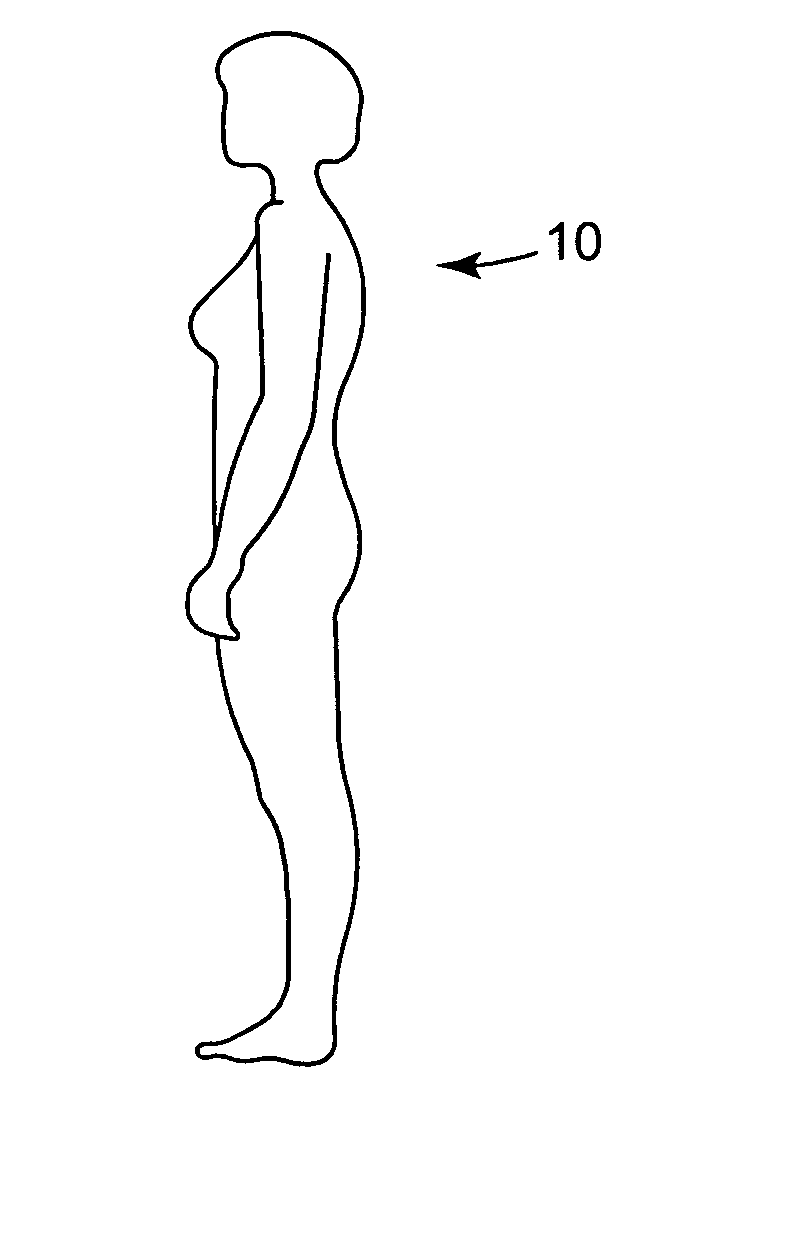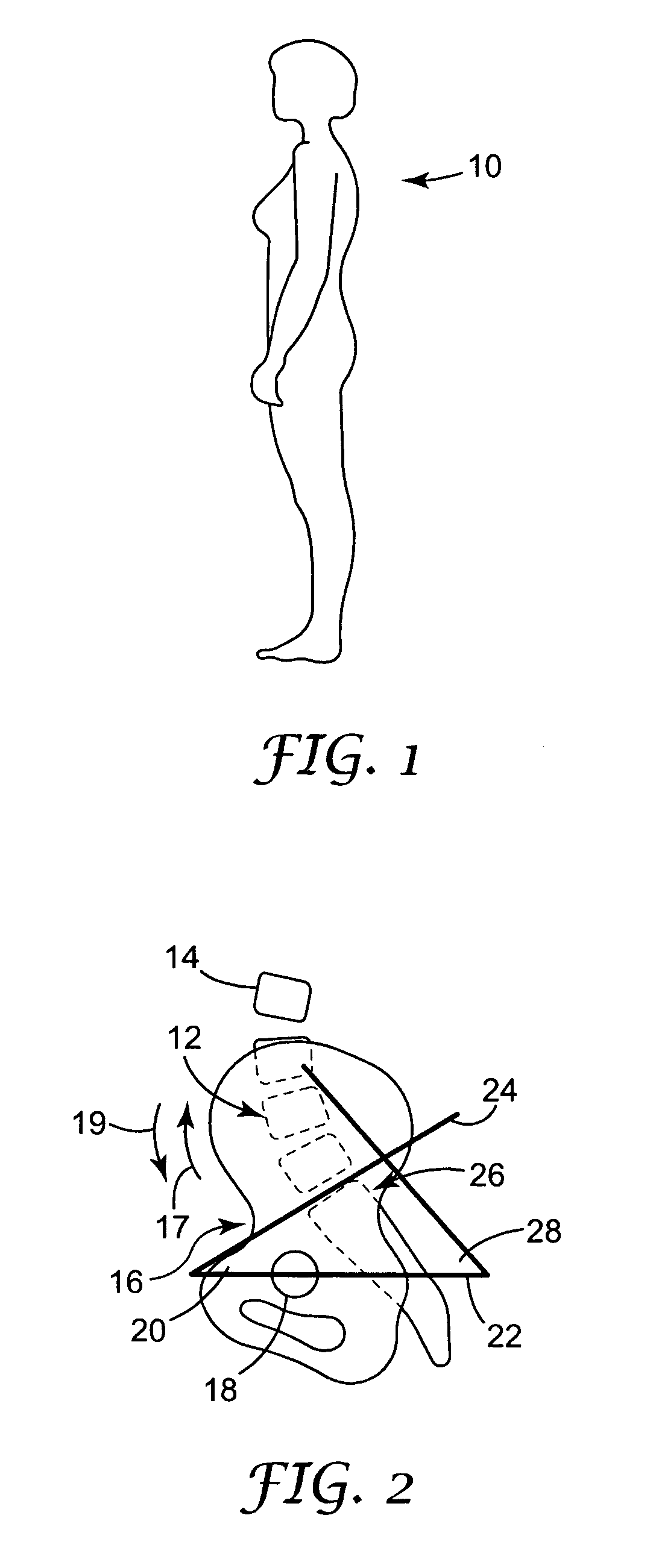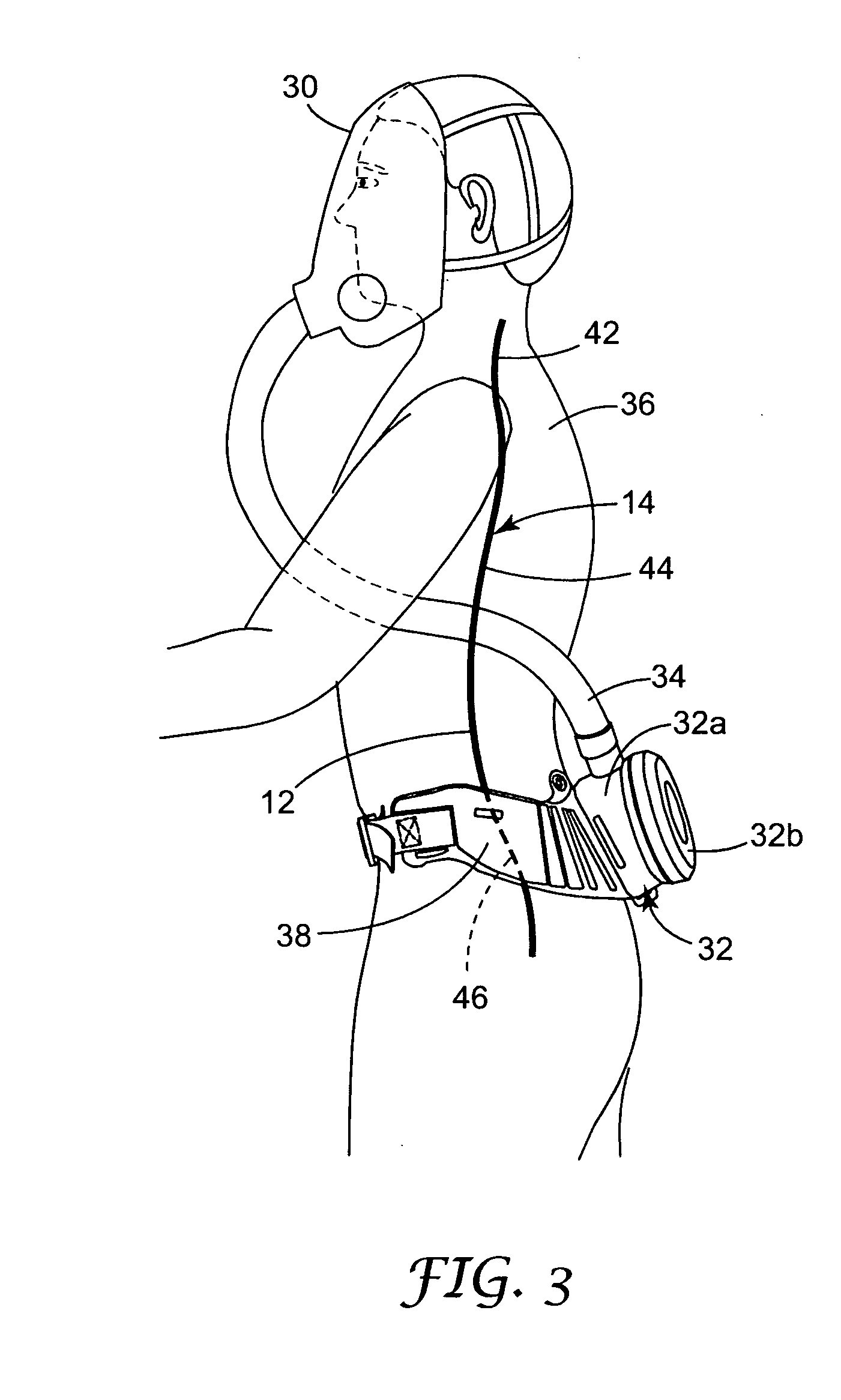Anatomically fitted respiratory component belt
a technology of respiratory components and belts, applied in the field of breast-mounted respiratory components, can solve the problems of wearer's body, respiratory hazards, harmful gases, vapors, and particulates, and achieve the effect of enhancing user comfort and reducing pinching
- Summary
- Abstract
- Description
- Claims
- Application Information
AI Technical Summary
Benefits of technology
Problems solved by technology
Method used
Image
Examples
Embodiment Construction
[0034] A respiratory protection system worn by a user is shown in FIG. 3. The respiratory protection system includes a breathing face-piece 30, or head gear, and a respiratory component 32, such as a fan-forced positive pressure breathing device, commonly known as a Powered Air Purifying Respirator (PAPR), an air filter or monitor. An air hose 34, or tube, connects the respiratory component 32 to the breathing face-piece 30 to supply breathable air to a user 36. The respiratory component 32 is designed to be worn by a person working in an atmosphere with unwanted contaminants, including respiratory hazards. The PAPR 32 has a housing 32a and one or more filter units 32b, which serve to filter unwanted contaminants from the surrounding atmosphere, thus allowing a user wearing the PAPR to work in contaminated or hazardous areas. The PAPR 32 typically has a weight in the range of about 0.3 Kg to about 3.0 Kg. One example of a PAPR is disclosed and described in U.S. Pat. No. 6,575,165, e...
PUM
 Login to View More
Login to View More Abstract
Description
Claims
Application Information
 Login to View More
Login to View More - R&D
- Intellectual Property
- Life Sciences
- Materials
- Tech Scout
- Unparalleled Data Quality
- Higher Quality Content
- 60% Fewer Hallucinations
Browse by: Latest US Patents, China's latest patents, Technical Efficacy Thesaurus, Application Domain, Technology Topic, Popular Technical Reports.
© 2025 PatSnap. All rights reserved.Legal|Privacy policy|Modern Slavery Act Transparency Statement|Sitemap|About US| Contact US: help@patsnap.com



